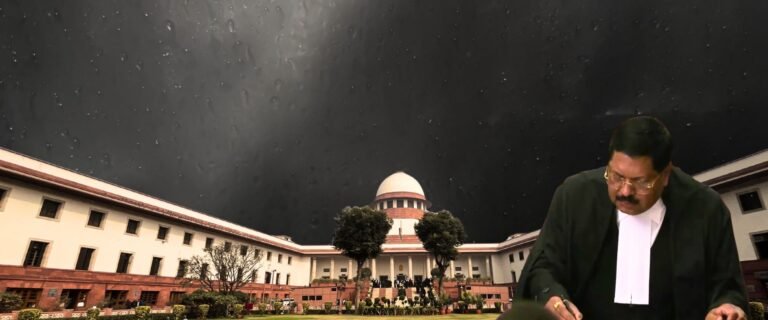
India fifa world cup
The FIFA World Cup is the summit of football, played and celebrated by millions across the world. For countries, participation in this tournament of honor is a source of pride and recognition in the world community. Indian too, being a country with an enormous population and growing fascination for football, fails to qualify for the world cup. With the 2026 FIFA World Cup set to feature 48 teams, hope springs eternal for countries on football’s fringes. It surely doesn’t for India though, where qualification remains a far dream.
As a precursor to that, this article delves into the reasons behind India not even being able to qualify for the World Cup Qualifiers by outlining the systemic, infrastructural, and cultural issues that continue to thwart Indian football.
- Lack of Grassroots Development
One of the fundamental problems with Indian football is that there is no strong grassroots development program in place. Countries which succeed in football directly invest much time and effort into finding and nurturing talent from an early age. In Brazil, Germany, and Japan, football academies and youth leagues are the backbone of the sport’s ecosystem.
A method it contrasts is fragmented and underfunded grassroots football. In India, though the All India Football Federation had orchestrated Baby Leagues and collaborated with FIFA in the name of programmes such as the FIFA Forward initiative, this remains woefully inadequate for a country of 1.4 billion people to even scrape together a structured and widespread pipeline of talented players for scouting.
- Inadequate Football Infrastructure
Infrastructure is the backbone of any sport, and India is woefully behind the clock in this aspect. The superior football fields, training facilities, and stadiums are found only in some cities, and vast parts of the nation are left behind.
For instance,
Even states like Kerala and West Bengal, with a strong footballing culture, lack a world-class facility for the training of young talent.
ISL and I-League clubs have seen improvement in developing infrastructural capabilities but still are far from the requirements of creating a nationwide impact.
Proper medical facilities and sports science services are lacking, too, and players get plagued with injuries and lack professional guidance on how to improve their body fitness.
- Inconsistent Domestic Leagues
The Indian domestic football structure is disorganized and lacks competitiveness in comparison with international standards. Though the Indian Super League (ISL) has introduced professionalism and gained much-needed publicity for Indian football, its limited season with fewer locally-based players are immediate issues.
Main problems are:
- Short Season: The ISL runs for just a few months; this means that most of the time, the player doesn’t get the consistent competitive play.
- Diluted Opportunities for Local Talent: ISL teams often prefer foreign players for major positions and, in the process, sideline Indian players who need adequate exposure to hone their talents.
- Unorganized Calendar: The existence of both the ISL and the I-League brings about confusion, splitting resources and attention instead of consolidating them into a unified league that is truly competitive.
- Countries like Japan (J-League) and South Korea (K-League) have strong, well-organized domestic leagues, which act as feeders for their national teams. India’s inability to follow this mode leads to a lack of consistent high-level competition for its players.
- Tactical Deficiencies in the National Team
India has a poor tactical record against stronger opponents. Even though coach Igor Štimac has stabilized the side to some extent, his side’s limited exposure to highclass opponents undermines the team’s ability to cope with the strategies of modern football.
- Problems are:
- Less International Exposure: India rarely plays against top-level teams, which deprives players of experience at a high level.
- Over-reliance on a Few Players: The national team is at the mercy of players like Sunil Chhetri. While Chhetri is invaluable to the team, the lack of a quality support system speaks poorly of the depth of Indian football.
- Defensive Mindset: India is classically defensive. It prefers not to lose rather than try to win. This mindset somehow keeps the team from competing neck and neck with better teams.
- Inadequate Support from the Government and Infrastructures
Football has been a subsidiary sports to cricket in India in regards to funding and remittance. Compared to cricket, which enjoys substantial support from the government and the private sector, football receives undue meager inputs.
Main issues:
- Low Budget Allocation: The budget for football development is minuscule compared to what cricket receives.
- Forgotten State Federations: Many state football associations are unable to provide resources and know-how to really push the sport at grass roots.
- Politics Interference: Administrative inefficiencies coupled with naked political interference in AIFF stand in a way of football growth.
- Socio-Cultural Factors
Football, for instance, is one of the fastest-growing sports in India, but it still lags behind cricket in popularity and social approval. Parents find cricket as a more feasible career option for their children, as it has a well-established structure, better monetary rewards, and holds much social respect.
Moreover, the sport grows unevenly in the country. States like West Bengal, Goa, Kerala, and North-East are deeply associated with the sport, whereas others have developed indifferent attitudes towards it. This disparity reduces the available talent pool for the national team.
- The Difficulty in Competition within Asia
Asia, though less competitive than in Europe or South America, does pose significant challenges to India in the World Cup Qualifiers. Comprising strong teams like Japan, South Korea, Iran, Saudi Arabia, and Australia, which have a long history of World Cup participation, the Asian Football Confederation (AFC) is indeed quite a formidable challenge.
India rarely manages to go past the 100-mark in the FIFA rankings, which generally casts it in the lower tiers of Asian football. Then India often faces good opponents very early in the qualifications and cannot really go deep into the qualification rounds.
- The Expanded Format: A Missed Opportunity?
The 2026 FIFA World Cup’s expansion to 48 teams provides more qualification spots for Asian teams, increasing from 4.5 to 8.5 slots. While this should theoretically improve India’s chances, the structural deficiencies in Indian football make it unlikely for the team to capitalize on this opportunity.
The expanded format aids countries with a solid football structure already in place, and it just needs to cross the final hurdle. India is still too far from that finish line.
9. Other Countries’ Experience
India can learn from countries that have risen up in football with fewer resources.
- Japan: After failing to qualify for the World Cup until 1998, Japan set up a long-term plan, part of which was the establishment of the J-League and investments in grass-root development.
- Iceland: With a population of a little more than 300,000, Iceland qualified for the 2018 World Cup by focusing its efforts on youth development and building small, community-based football facilities.
- Qatar: The host of the 2022 World Cup invested heavily in its Aspire Academy, producing players who have brought the nation success at the Asian level.
- The Road Ahead for Indian Football
Despite the challenges, there is hope for Indian football. Initiatives like the Mission 2047 plan by AIFF aim to make India a footballing powerhouse by the country’s centenary of independence. However, this requires:
- Increased Investment: Government, as well as private sector funding, needs to increase into infra development and coaching and player welfare.
More Skilled Coaches: There is a need for a pool of good coaches who can work down in the grass roots.
A Consolidated Domestic League: Integration of ISL and I-League into one competitive league with a longer season will give players more continuous match experience.
Exposure to High-Level Competition: National teams need to engage in more friendlies against first-tier teams and participate in competitions such as Copa América or Nations League.
Cultural Change: Football needs to be marketed as a career that can be pursued. Media will become a right tool, besides marketing, in attracting more talent to the sport.
Conclusion
India’s failure to qualify for the FIFA World Cup 2026 Qualifiers is not due to a lack of talent but rather systemic issues that have persisted for decades. Addressing these challenges requires a comprehensive, long-term approach that prioritizes investment in grassroots development, infrastructure, and the domestic football ecosystem.
While, of course, the dream of watching India play in the FIFA World Cup may still be distant, the journey towards achieving this dream must begin now. Learning lessons from other successful footballing nations and implementing structural reforms can make Indian football take meaningful steps towards realizing its potential on the global stage.







1 thought on “Why India Fails to even Qualify for Qualifiers of FIFA World Cup 2026”